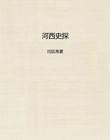But this whole leasing system, both in New York and Chicago, entailed scandals perhaps even more reprehensible.All these leased properties, when taken over, were horse-car lines, and their transformation into electrically propelled systems involved reconstruction operations on an extensive scale.It seems perfectly clear that the chief motive which inspired these extravagant leases was the determination of the individuals who made up the syndicate to obtain physical possession and to make huge profits on construction.The "construction accounts" of the Metropolitan in New York form the most mysterious and incredible chapter in its history.The Metropolitan reports show that they spent anywhere from $500,000 to $600,000 a mile building underground trolley lines which, at their own extravagant estimate, should have cost only $150,000.In a few years untold millions, wasted in this way, disappeared from the Metropolitan treasury.In 1907 the Public Service Commission of New York began investigating these "construction accounts," but it had not proceeded far when the discovery was made that all the Metropolitan books containing the information desired had been destroyed.All the ledgers, journals, checks, and vouchers containing the financial history of the Metropolitan since its organization in 1893 had been sold for $117 to a junkman, who had agreed in writing to grind them into pulp, so that they would be safe from "prying eyes." We shall therefore never know precisely how this money was spent.But here again the Chicago transactions help us to an understanding.In 1898 Charles T.Yerkes, with that cynical frankness which some people have regarded as a redeeming trait in his character, opened his books for the preceding twenty-five years to the Civic Federation of Chicago.These books disclosed that Mr.Yerkes and his associates, Widener and Elkins, had made many millions in reconstructing the Chicago lines at prices which represented gross overcharges to the stockholders.
For this purpose Yerkes, Widener, and Elkins organized the United States Construction Company and made contracts for installing the new electric systems on the lines which they controlled by lease or stock ownership.It seems a not unnatural suspicion that the vanished Metropolitan books would have disclosed similar performances in New York.
The concluding chapter of this tragedy has its setting in the Stock Exchange.These inside gentlemen, as already said, received no cash as their profits from these manipulations--only stock.
But in the eyes of the public this stock represented an enormous value.Metropolitan securities, for example, represented the control and ownership of all the surface transit business in the city of New York.Naturally, it had a great investment value.
When it began to pay regularly seven per cent dividends, the public appetite for Metropolitan became insatiable.The eager purchasers did not know, what we know now, that the Metropolitan did not earn these dividends and never could have earned them.
The mere fact that it was paying, as rentals on its leased lines, annual sums far in excess of their earning capacity, necessarily prevented anything in the nature of profitable operation.The unpleasant fact is that these dividends were paid with borrowed money merely to make the stock marketable.It is not unlikely that the padded construction accounts, already described, may have concealed large disbursements of money for unearned dividends.When the Metropolitan was listed in 1897, it immediately went beyond par.The excitement that followed forms one of the most memorable chapters in the history of Wall Street.
The investing public, egged on by daring and skillful stock manipulators, simply went mad and purchased not only Metropolitan but street railway shares that were then even more speculative.
It was in these bubble days that Brooklyn Rapid Transit soared to heights from which it subsequently descended precipitately.Under this stimulus, Metropolitan stock ultimately sold at $269 a share.While the whole investing public was scrambling for Metropolitan, the members of the exploiting syndicate found ample opportunity to sell.The real situation became apparent when William C.Whitney died in 1904 leaving an estate valued at $40,000,000.Not a single share of Metropolitan was found among his assets! The final crash came in 1907, when the Metropolitan, a wrecked and plundered shell, confessed insolvency and went into a receivership.Those who had purchased its stock found their holdings as worthless as the traditional western gold mine.The story of the Chicago and Philadelphia systems, as well as that of numerous other cities, had been essentially the same.The transit facilities of millions of Americans had merely become the instruments of a group of speculators who had made huge personal fortunes and had left, as a monument of their labors, street railway lines whose gross overcapitalization was apparent to all and whose physical dilapidation in many cases revealed the character of their management.
It seems perhaps an exaggeration to say that the enterprises which have resulted in equipping our American cities and suburbs with trolley lines and electric lighting facilities have followed the plan of campaign sketched above.Perhaps not all have repeated the worst excesses of the syndicate that so remorselessly exploited New York, Chicago, and Philadelphia.Yet in most cases these elaborate undertakings have been largely speculative in character.Huge issues of fictitious stock, created purely for the benefit of inner rings, have been almost the prevailing rule.Stock speculation and municipal corruption have constantly gone hand in hand everywhere with the development of the public utilities.The relation of franchise corporations to municipalities is probably the thing which has chiefly opened the eyes of Americans to certain glaring defects in their democratic organization.The popular agitation which has resulted has led to great political reforms.The one satisfaction which we can derive from such a relation as that given above is that, after all, it is representative of a past era in our political and economic life.No new "Metropolitan syndicate" can ever repeat the operations of its predecessors.Practically every State now has utility commissions which regulate the granting of franchises, the issue of securities, the details of construction and equipment and service.An awakened public conscience has effectively ended the alliance between politics and franchise corporations and the type of syndicate described in the foregoing pages belongs as much to our American past as that rude frontier civilization with which, after all, it had many characteristics in common.















